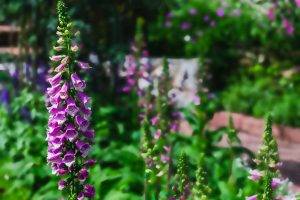
Red foxglove-Digitalis purpurea
Description of red foxglove:
Digitalis purpurea L. Digitalis purpurea (Red rose), Red rose purpurea – Srophulariaceae A biennial plant growing to a height of one to two and a half metres, producing only bracts in the first year and stems in the second. The bracts have a long, winged stem, the lower ones are short-tongued, the upper ones are stalkless. The leaf plate is long ovate, pointed, unevenly lacy, darker green above than below. The lower leaflet is hairy on the woolly side. The veins are indented on the upper side, strongly prominent below, which is why the leaf plate is also strongly wrinkled. The petals of the individual flowers are purple-red, and the individual flowers form clusters.
Occurrence:
Native to western Europe, occurring mainly in mountain forests on calcareous soils. In our country it is found in large quantities in the Northern Carpathians. Since the mutilation of our country, its cultivation has increased in the remaining areas.
Part of the plant to be collected:
The leaves are collected.
Active ingredient:
Besides digitoxin, digitalin, digitalein, digitaloxin glycosides and as yet undetermined compounds, it contains very few volatile oils.
 Cultivation:
Cultivation:
Best grown in semi-shaded garden soil, – after catch crops, – by sowing seeds. The seeds are sown in April or May and the seedlings are planted out in June or July in beds 20 cm apart, watered regularly and kept constantly clear of weeds by hoeing. Once the seedlings have become firm, they can be planted out in the autumn or in the spring of the following year at a distance of 30 cm between the rows. For planting one acre of seed, 50 grams of seed are required. Yield per acre of seed is 4-5 q (maza) of dry leaves.
Harvesting and drying:
The leaves of red foxglove are collected at flowering and the flowering period is in May-June of the second year of the plant. The leaves are always collected in dry weather and dried at ordinary temperatures.
Processing and marketing:
The leaves of the red foxglove are used crushed to make decoctions and in powdered form to make pellets and powders. In addition, the individual constituents are extracted and marketed as various medicinal specialities. Source: Dr. Ferenc Darvas and Dr Gyula Magyary-Kossa,Domestic herbs, their production, marketing, effects and medicinal uses
